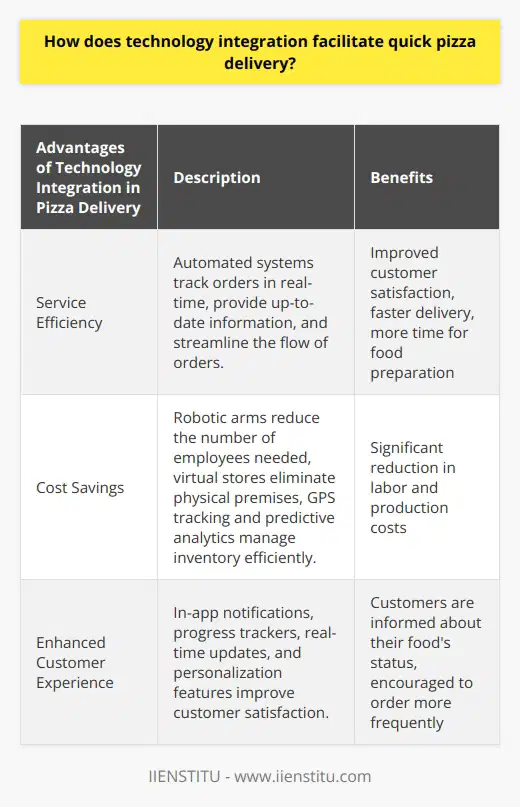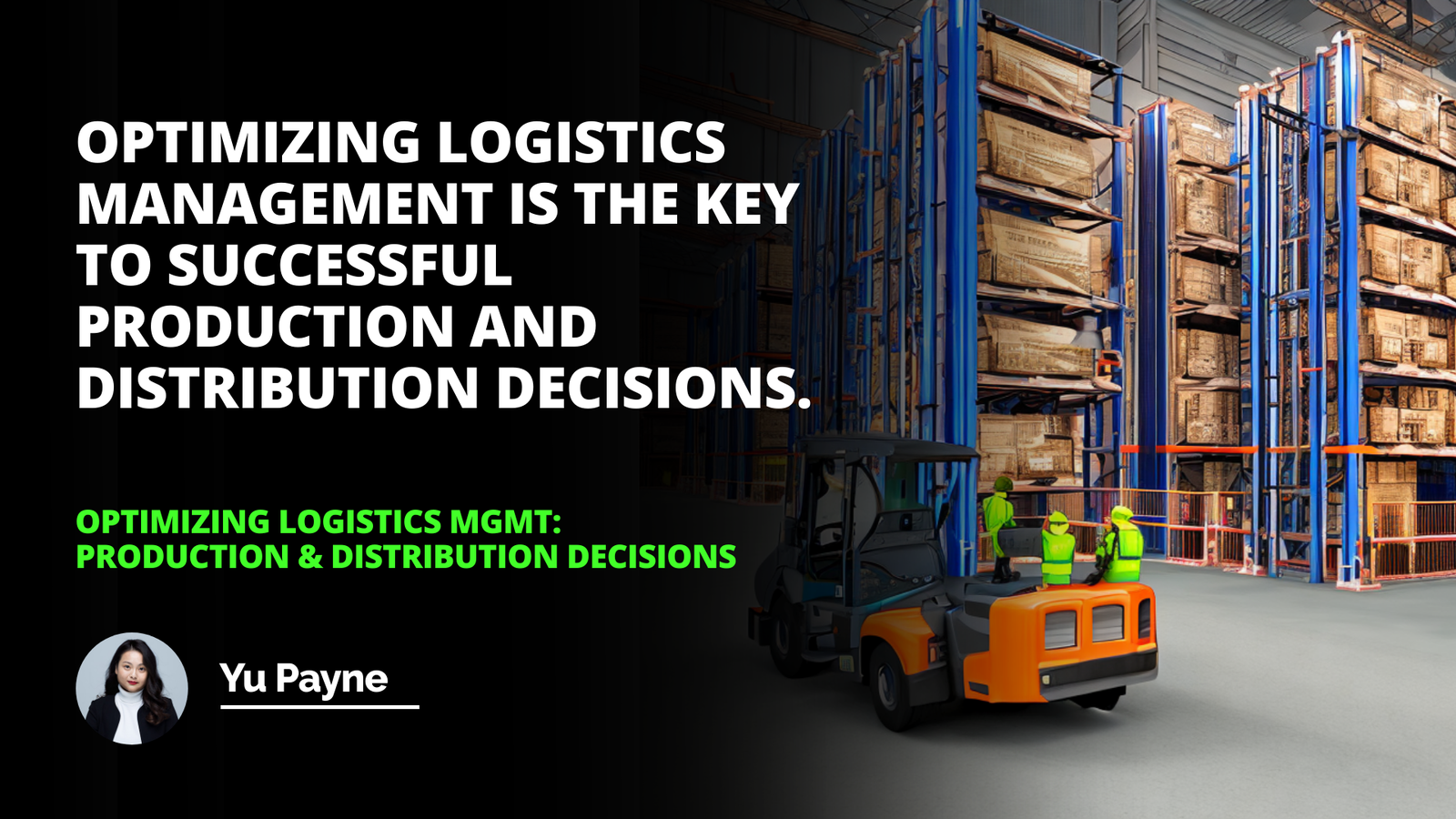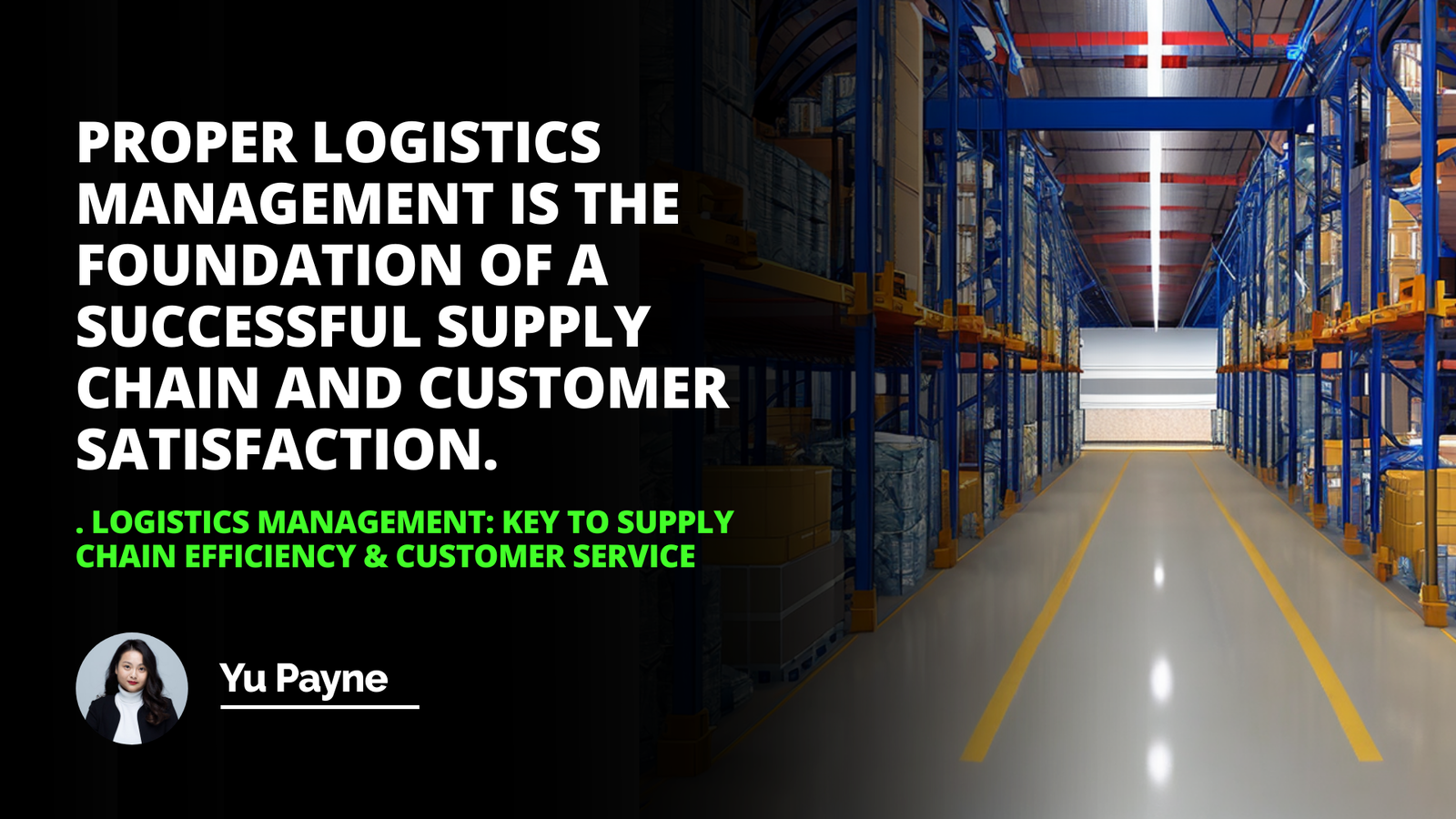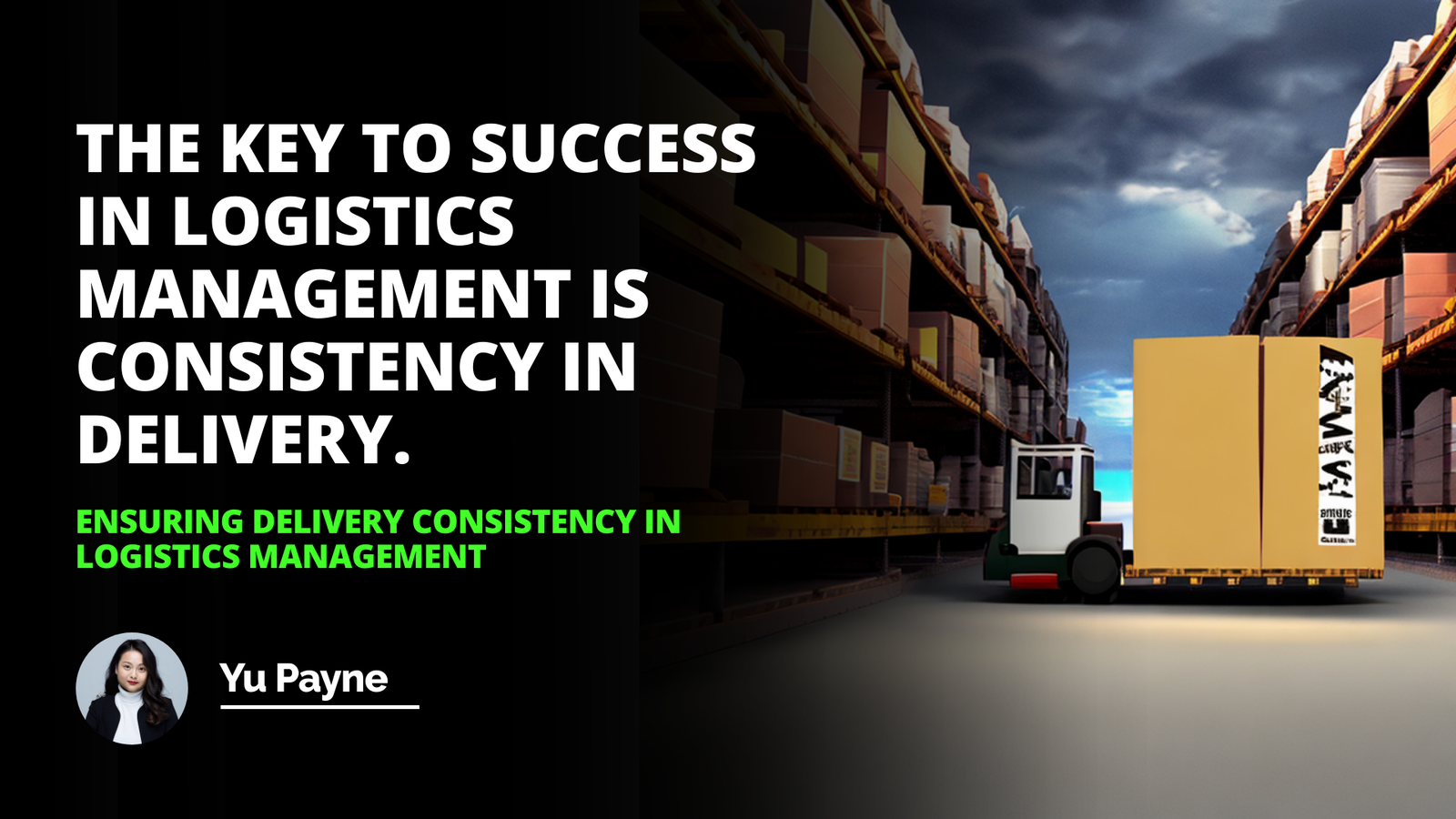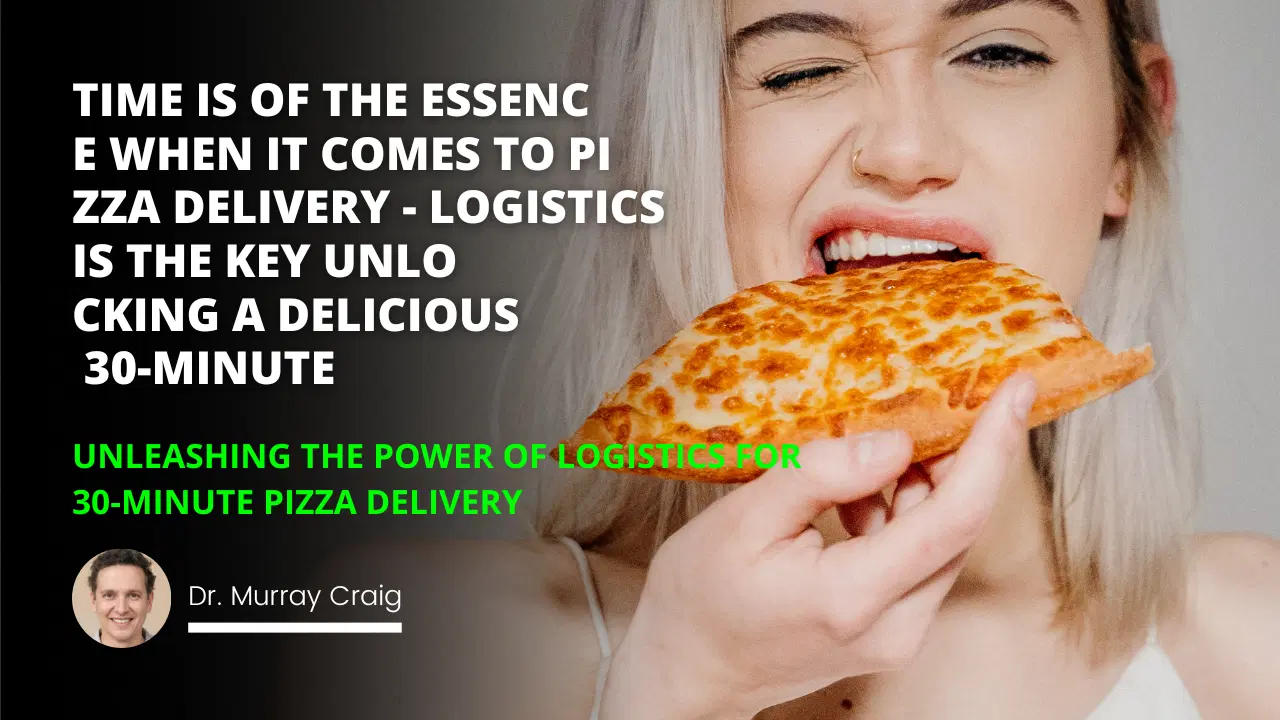
What is Logistics?
The Need for Logistics in Pizza Delivery
Understanding the Power of Logistics
Benefits of Logistics in Pizza Delivery
Challenges in Implementing Logistics in Pizza Delivery
Logistics technology has revolutionized many industries, providing organizations with efficient and effective solutions for managing their supply chains. It has helped organizations with everything from order fulfillment to last-mile delivery. But, one sector that has particularly benefited from logistics technology is the food delivery space.
What is Logistics?
Logistics, in its simplest form, is the process of planning, organizing, and controlling the flow of goods and services from production to consumption. It involves optimizing, coordinating, and supervising the physical flow of materials and commercial goods from origin to the end of consumption. Logistics is necessary for all types of businesses, from selling tangible goods to offering services.
The Need for Logistics in Pizza Delivery
Pizza delivery requires the coordination of multiple complex processes, such as order processing and tracking, ingredient procurement, store crowd management, and last-mile delivery. Especially for 30-minute delivery, each process must be completed efficiently and effectively to meet the promised deadline. Therefore, the need for logistics in pizza delivery is to optimize the entire process from the store to the customer and back to the store.
Understanding the Power of Logistics
Logistics can provide several solutions for optimizing the pizza delivery process:
It can provide supply chain solutions for better inventory management and controlling the flow of ingredients.
It can automate order processing and tracking to ensure timely deliveries.
It can leverage last-mile delivery solutions to ensure the pizzas are delivered to the customer’s doorstep.
Benefits of Logistics in Pizza Deliver
The primary benefit of logistics in pizza delivery is increased efficiency of delivery times. This is achieved through better supply chain management, order processing and tracking automation, and last-mile delivery solutions. Other benefits include improved customer satisfaction, as customers now expect timely deliveries and real-time updates regarding the status of their orders. Furthermore, logistics also support real-time customer engagement, allowing customers to contact drivers or receive push notifications about the quality of their demands.
Challenges in Implementing Logistics in Pizza Delivery
The primary challenge in implementing logistics in pizza delivery is the availability of operational and financial resources. Since logistics involve multiple interlinking processes that must be coordinated with one another, organizations must have the necessary resources available to ensure that these processes are completed effectively. Additionally, there is a need for coordination between the store, the delivery personnel, and the customers. Therefore, it is essential to have the right processes in place to ensure smooth and efficient operations.
Conclusion: Logistics technology can significantly benefit the pizza delivery industry by optimizing the entire process from the store to the customer. By optimizing order processing and tracking managing stores and supply chains, and leveraging last-mile delivery solutions, logistics solutions can help organizations reduce delivery times and improve customer satisfaction. However, organizations must ensure they have the necessary operational and financial resources to implement logistics solutions effectively. Nevertheless, it can minimize pizza delivery times to 30 minutes or less if done correctly.
Time is of the essence when it comes to pizza delivery logistics and is the key to unlocking a delicious 30-minute experience.
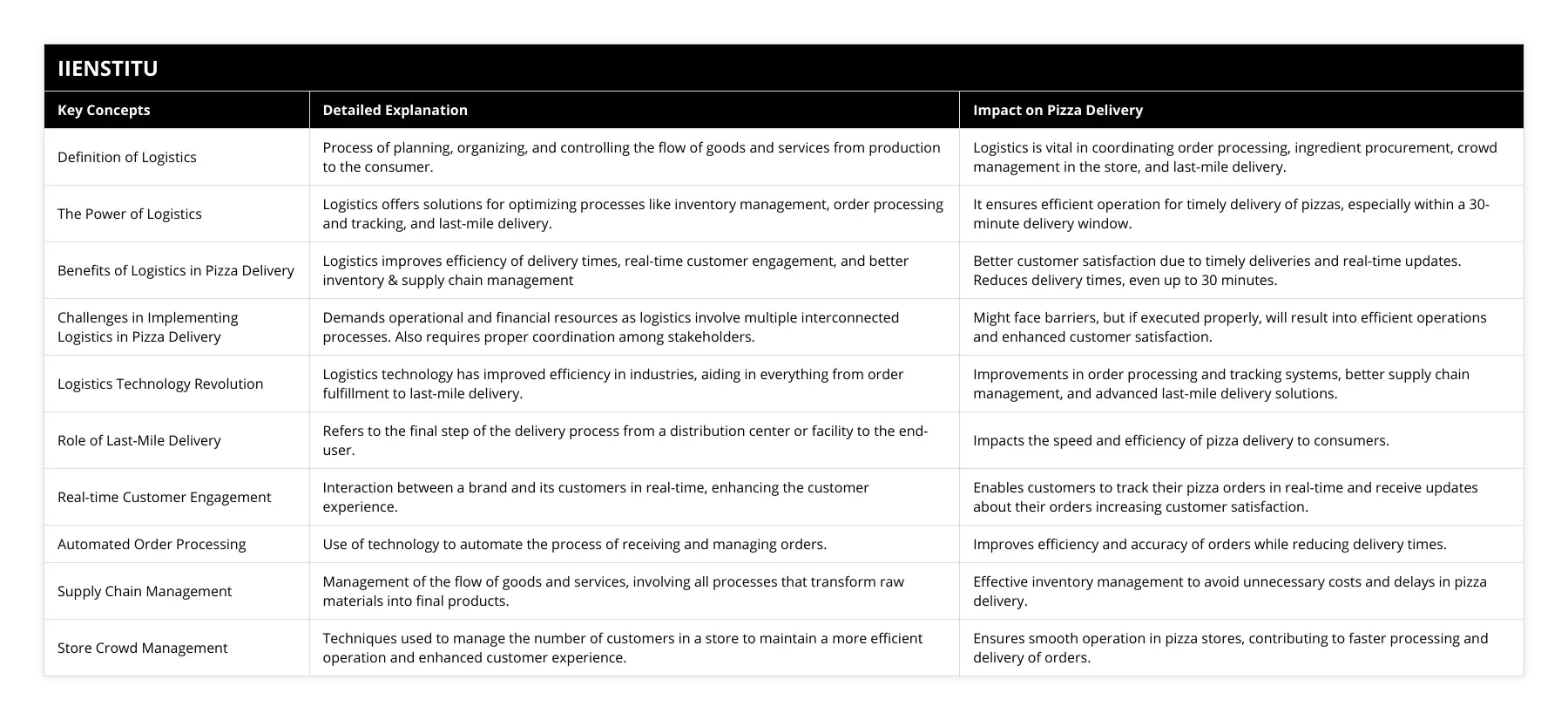
Frequently Asked Questions
What innovative strategies can be used to ensure the successful implementation of 30-minute pizza delivery?
Pizza delivery companies must provide quick and efficient services to remain competitive in today's market. Introducing 30-minute pizza delivery is an innovative strategy to ensure customer satisfaction, as it allows customers to receive their pizzas in time. Many companies have adopted this creative strategy, and successful implementation facilitates well-functioning delivery systems. Thus, pizza delivery companies must consider innovative techniques to ensure the successful performance of 30-minute pizza delivery.
The first innovative strategy is to improve the navigation systems of delivery vehicles so that the drivers can quickly reach the customer. Navigation systems, such as GPS and Google Maps, help the drivers select the fastest route to deliver the pizzas within the allocated time. Furthermore, adding navigation systems to the delivery vehicles can increase the overall efficiency of the business.
Another strategy is to provide incentives to the employees. For example, incentivizing the employees to deliver pizzas within the 30-minute window can motivate them to perform better. Additionally, providing bonuses to the delivery personnel for successful delivery within the 30-minute window can benefit the company, resulting in improved efficiency.
In addition, introducing online ordering systems can be an effective strategy for successfully implementing 30-minute pizza delivery. Having an online platform for the customers to order their pizzas can facilitate the process of delivery and can help reduce the waiting time for the customers. Furthermore, introducing an automated tracking system can help keep track of each pizza order and ensure that the charges are delivered within the allocated time.
Finally, it is necessary to ensure the timely maintenance of delivery vehicles to implement 30-minute pizza delivery. Regular maintenance of the delivery vehicles can reduce the chances of breakdowns, drastically affecting the delivery time. Additionally, arranging light cars can help during study times or when orders increase.
By considering the above strategies, pizza delivery companies can ensure the successful implementation of 30-minute pizza delivery. In addition, implementing these strategies can help delivery companies to reduce delivery time, consequently increasing customer satisfaction.
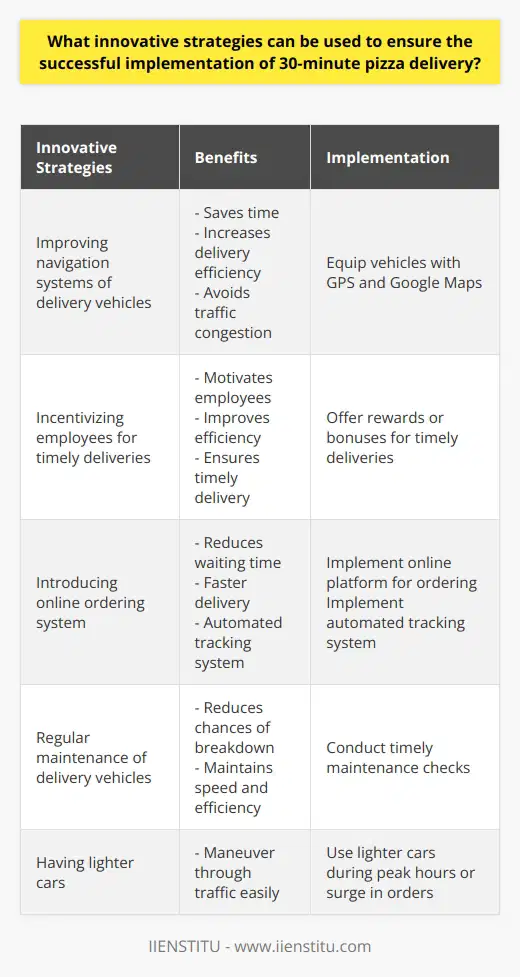
How can logistics be used to reduce cost and maximize efficiency for 30-minute pizza delivery?
Recent advancements in logistics technology and service delivery have enabled pizza delivery services to achieve greater efficiency and reduce operational costs. This is especially true for services offering 30-minute delivery. However, successful pizza delivery services must ensure that the pizza is delivered as quickly as possible while maintaining the pizza's quality and freshness. Therefore, when developing delivery systems and services, a logistics approach must be taken to reduce costs and maximize efficiency.
The key to successful 30-minute pizza delivery is clear protocols and procedures that optimize the order-to-delivery process. This involves using technology to track drivers, review order status, assign drivers to specific locations, and generate route maps that minimize wait time and delivery distance. Implementing such a system can then be monitored for inefficiencies or areas for improvement.
Customers should also be taken into account when considering logistics for pizza delivery. Pizza delivery companies must provide a level of service that meets customer expectations. This can be achieved by giving customers visibility into the delivery process to better inform them about the expected delivery time and order status. This encourages a greater trust in the delivery service, reducing the number of customer inquiries and comments.
Finally, streaming data can improve order-to-delivery operations and better meet customer expectations. For example, pizza delivery services can use data analytics to understand customer ordering behavior better and enhance driver and delivery allocation decision-making. Such data-driven decisions can reduce wait times and costs associated with the delivery process.
Logistics provides the tools to reduce cost and maximize efficiency for 30-minute pizza delivery. By utilizing the right technology, having an effective order-to-delivery process, and leveraging streaming data, pizza delivery services can increase customer satisfaction, reduce delivery time, and cut operational costs.
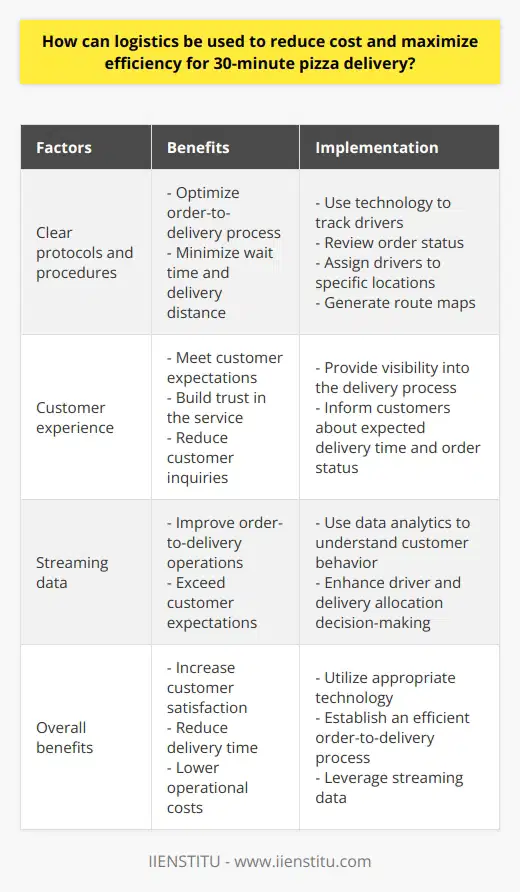
How does technology integration facilitate quick pizza delivery?
Technological advancements in the pizza delivery industry have continuously improved the speed and efficiency with which customers can get their food. Pizza delivery has become more convenient with the rise of e-commerce, delivery apps, and virtual stores. Through the integration of technologies such as GPS tracking, robotics, predictive analytics, and data centralization, there is a multitude of ways in which this industry has been revolutionized.
One significant advantage of technology integration is efficient service. Automated systems can track orders in real-time and update customers about the process at any time. In addition, by consolidating ordering, preparation, and delivery systems, order flow is improved significantly. For example, robots can speedily bring orders to the kitchen, giving more time to prepare the food. Furthermore, delivery apps can be used for automatic order placement and payment, allowing pizza companies to save time and serve more customers quickly.
Another advantage of technology integration is cost savings. For example, robotic arms can reduce the number of employees needed in kitchens, leading to significant savings in labor costs. Similarly, virtual stores allow pizzerias to operate without needing physical premises, which can reduce rental costs significantly. GPS tracking and predictive analytics can also help predict customer demand and manage inventory levels, reducing production costs.
Finally, technology integration in pizza delivery can enhance customer experience. In-app notifications, progress trackers, and real-time updates can ensure customers know exactly when to expect their food, making the experience highly satisfying. In addition, personalization features can be used to suggest to customers items they like and make them return for more.
Technology integration in the pizza delivery industry has been an essential driver of quick and efficient service. Automated systems, robotic arms, and data analytics have enabled pizza companies to improve their order flow, reduce labor costs, and enhance customer experience. In today’s digitally connected age, all these factors ensure customers get their favorite food in record time.
